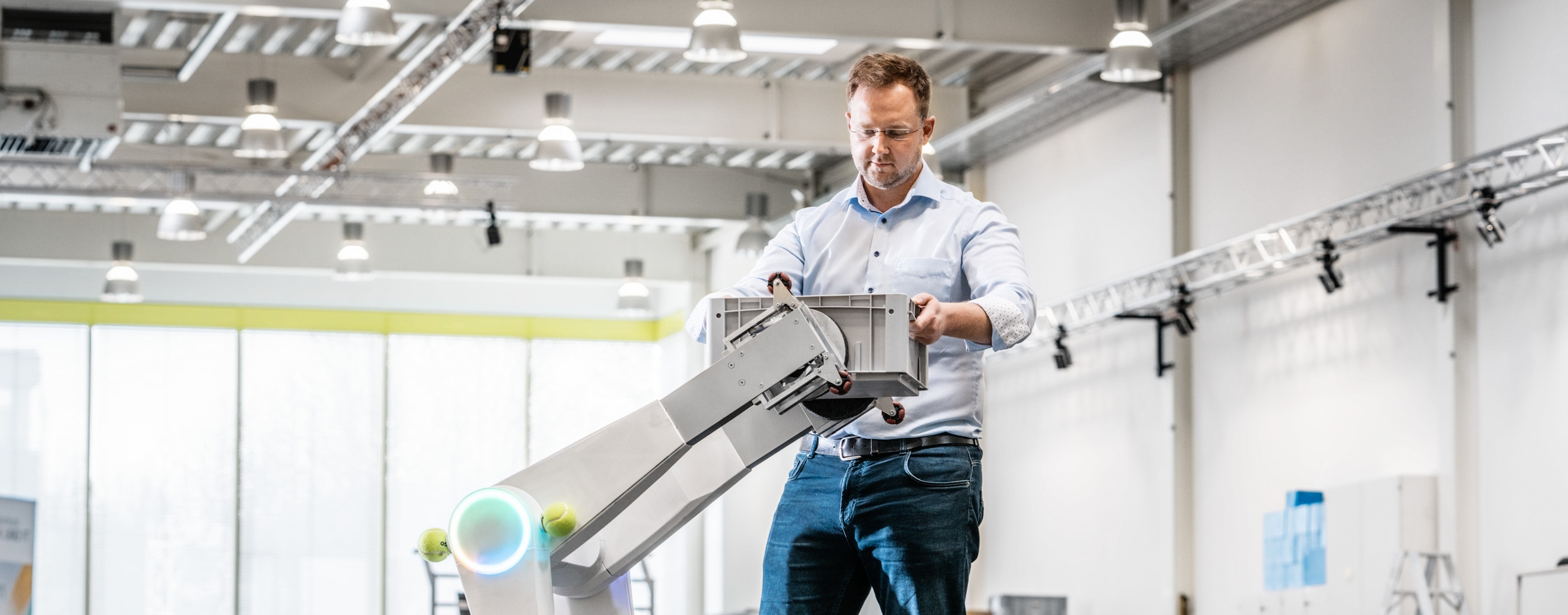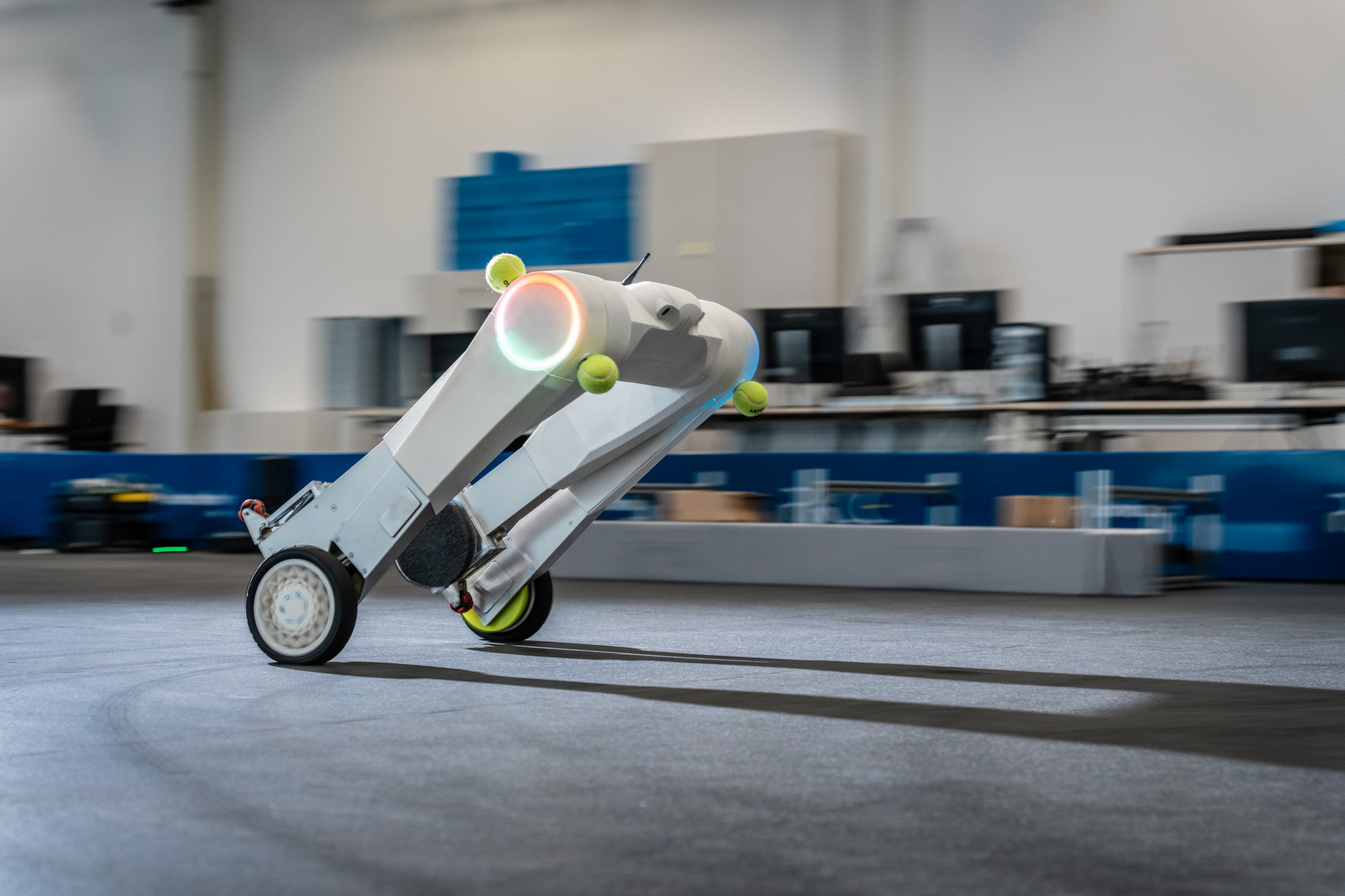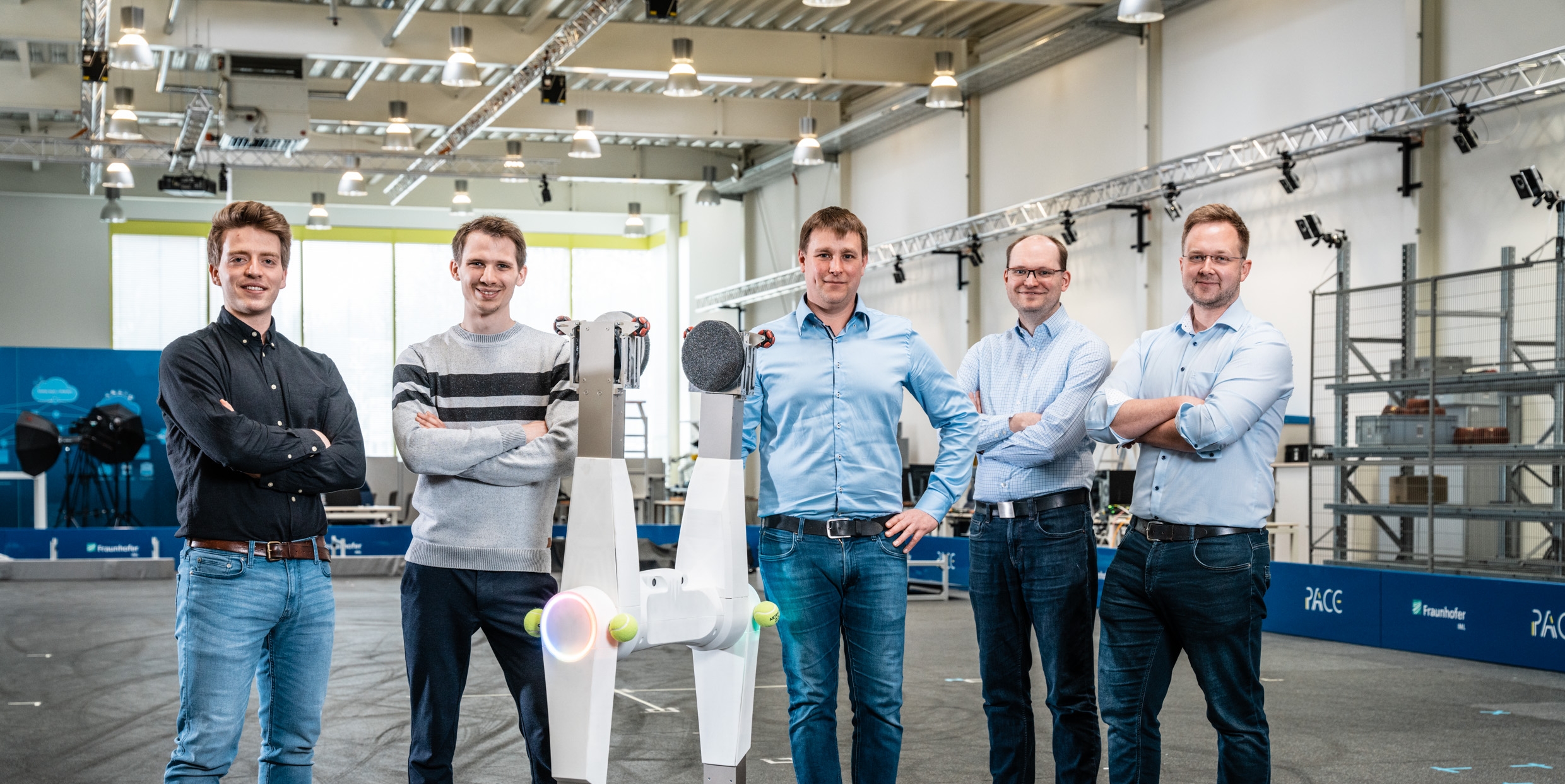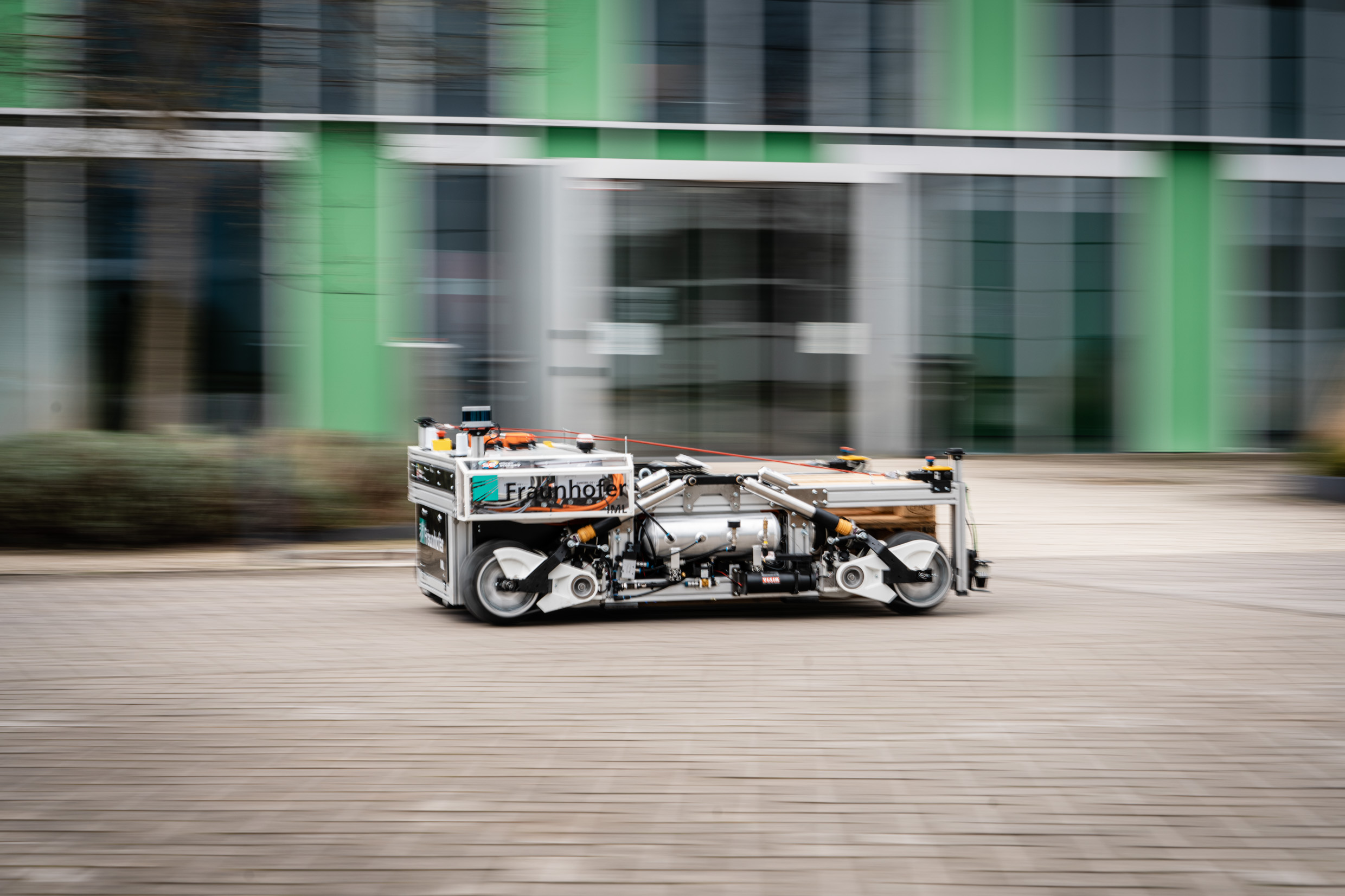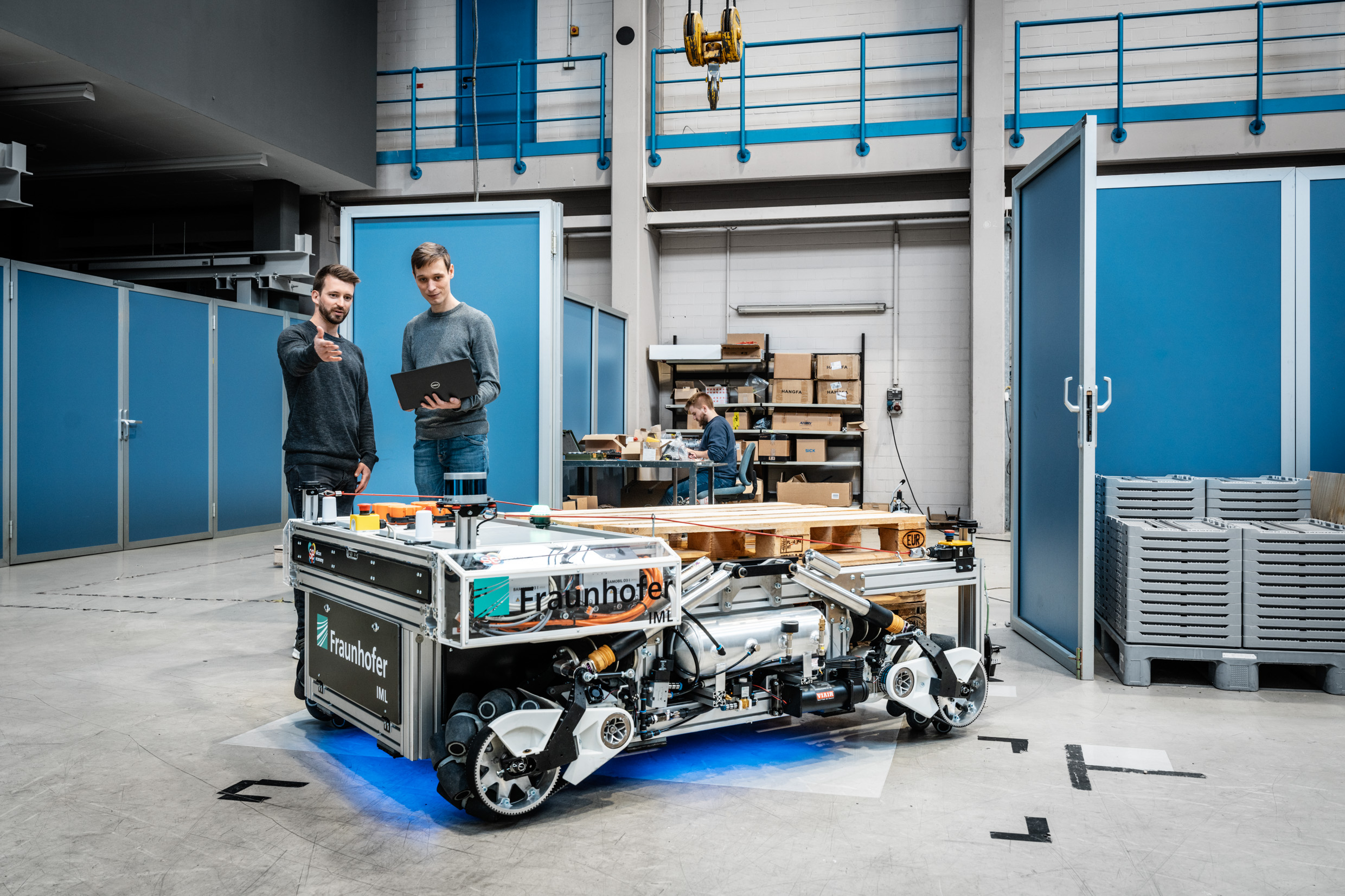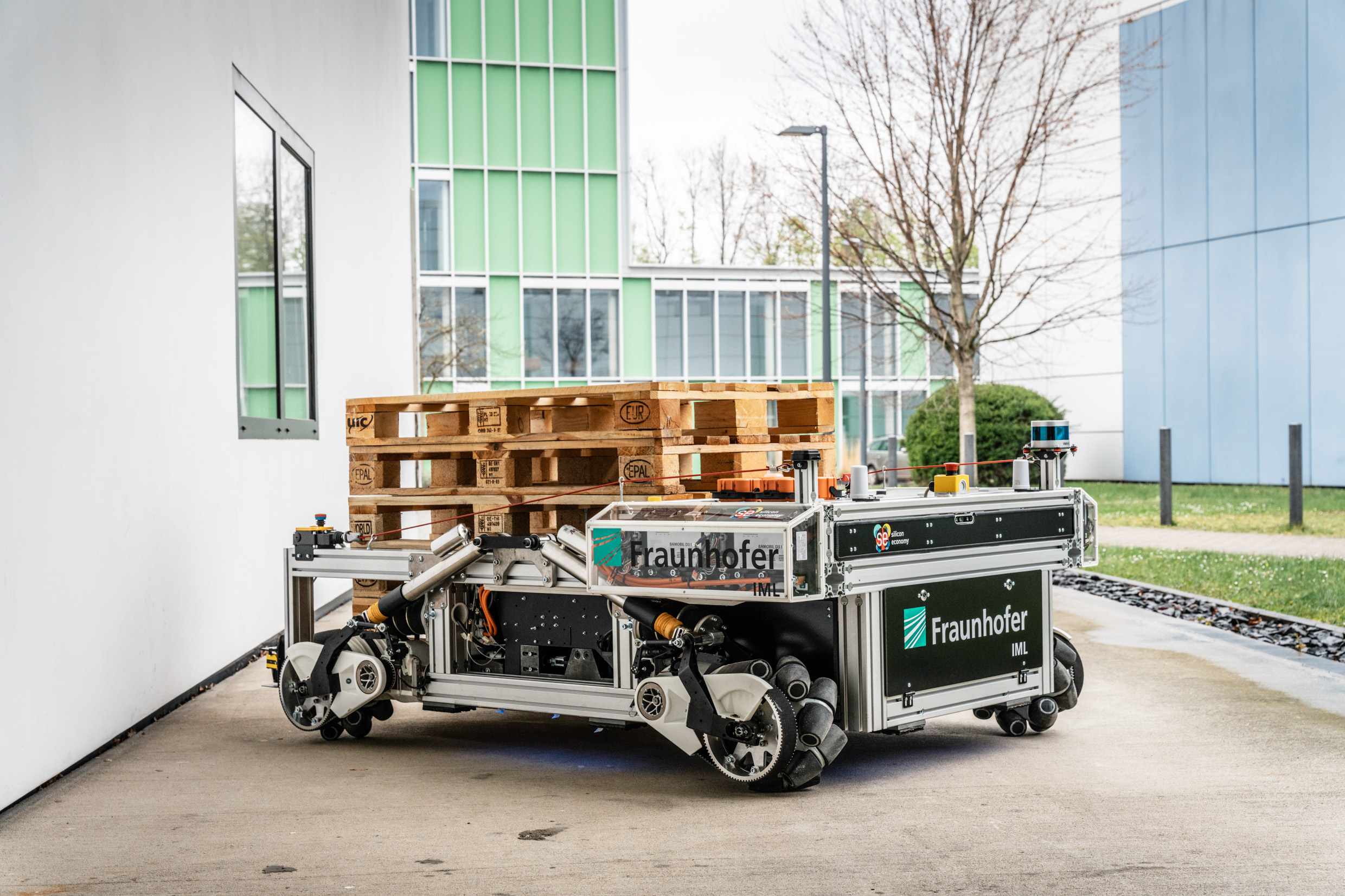Smart, fast and ahead of its time thanks to AI-based simulation: Artificial intelligence serves as an enabler for the automation of complex transport systems.
Mobile transport robots
The mobile transport robots are on their way
On the way to fully flexible logistics, autonomy in decision-making and the self-organization of the material flow are indispensable. This creates completely new, highly dynamic classes of transport vehicles that pose new challenges for decentralized control. Researchers at Fraunhofer IML developed two novel autonomous mobile transport robots within the »OpenDynamics« project of the Silicon Economy funded by the Federal Ministry for Digital Affairs and Transport: The test vehicles were driving around in front of an expert audience as part of the IFOY TEST Days in Dortmund. The Fraunhofer IML will present the further development of the robots to a broader public at the LogiMAT at the end of May.
Hardly any driverless transport vehicle (AGV) or transport robot is completely autonomous today. The few autonomous systems are proprietary and do not offer a standard interface. Within this context, Silicon Economy researchers developed a new generation and a new »league« of transport robots in the »OpenDynamics« project that really act autonomously. What's more: Numerous components for the hardware, but also for the navigation and localization software, are available to companies open source - the guiding principle of the Silicon Economy. The scientists already implemented first commercial solutions.
The main characteristics of the two test vehicles at a glance:
Always in balance: Dynamically stable »evoBOT« robot
Silicon Economy researchers used the driving principle of the »inverse pendulum« to develop an innovative platform with intelligent automatic balancing. The platform can be equipped with a wide variety of gripper solutions for holding, positioning and moving goods. Thanks to the pendulum movement, a robot based on the platform can pick up objects directly from the ground and deliver them at different levels. Numerous applications can be found in intralogistics for such extremely flexible, fast transport robots, which promise an all-in-one solution. The construction plan for the first pendulum stage of the chassis will be open source soon and thus attract a developer community.
Further information on the developments relating to the »evoBOT« can be found here.

Privacy warning
With the click on the play button an external video from www.youtube.com is loaded and started. Your data is possible transferred and stored to third party. Do not start the video if you disagree. Find more about the youtube privacy statement under the following link: https://policies.google.com/privacyTransport roboter »evoBOT«
»With its upright gait, the evoBot marks an important point in the evolution of mobile robots. Its development points in the direction of humanoid robotics. Every day, we come up with new ideas for the evoBot’s use. On the one hand, it pushes ahead into the field of high-performance conveyor technology at a speed of 10 m/s and, on the other hand, it can fulfill very individual tasks in interaction with people. The areas of application of the evoBOT extend beyond the classic logistical context to complex urban areas.«
Prof. Michael ten Hompel

On the move indoors and outdoors: Highly dynamic outdoor robot »O³dyn«
Many driverless transport vehicles today are designed for low dynamics and are designed for either the interior or exterior of company premises. They have either high performance, dynamics or flexibility. So far, all three characteristics together cannot be found in practically any single vehicle. The highly dynamic robot can now transport large loads in the format of a pallet omnidirectionally at high speed. It is designed to leave the protected and defined environment of warehouses and to operate on the respective company premises.
The vehicle's navigation works seamlessly at the transition between indoor and outdoor areas. It is implemented using environment-based and radio-based localization algorithms. The robot is based on the research results and the vehicle basis of the LoadRunner®.

Privacy warning
With the click on the play button an external video from www.youtube.com is loaded and started. Your data is possible transferred and stored to third party. Do not start the video if you disagree. Find more about the youtube privacy statement under the following link: https://policies.google.com/privacyHochdynamischer Outdoor Roboter O³dyn
AI-based simulation accelerates development
The two mobile transport robots were developed at Fraunhofer IML using an AI-based simulation - a completely new process that the researchers also presented at the digital NVIDIA »GTC developer conference for the age of AI« in March.
Highly complex processes are simulated in real time through highly parallel processing of modern graphics cards and form the basis of a new »league« of algorithms - the »simulation-based AI«. Simulations use models for abstraction. For the development of such highly dynamic systems as the two transport robots, the behavior of the simulated transport vehicles is synchronized with that of the real transport vehicles in a special, particularly suitable test environment - with the help of high-performance motion capturing. This way, the simulation model is optimized. If the difference between the model and reality is reduced, the simulation turns into a digital reality for the AI and the robot becomes the CPS twin (CPS = cyber-physical systems) of the simulation.
Using traditional methods, the development of new robots takes several years. With the help of AI-based simulation, however, the robots can be trained with new requirements from intralogistics during the development period. Thanks to digital reality, the development of the hardware can be decoupled from the programming of the system behavior during the development period. If the robots then go into production, they are still state-of-the-art or at the level of the latest intralogistics technology - a significant added value compared to classic robot development.
Researchers at Fraunhofer IML had already used this technology for the first time as part of the LoadRunner® project in order to develop the AI for swarm control purely virtually, and thus opened up a completely new branch of research.
 Fraunhofer Institute for Material Flow and Logistics IML
Fraunhofer Institute for Material Flow and Logistics IML